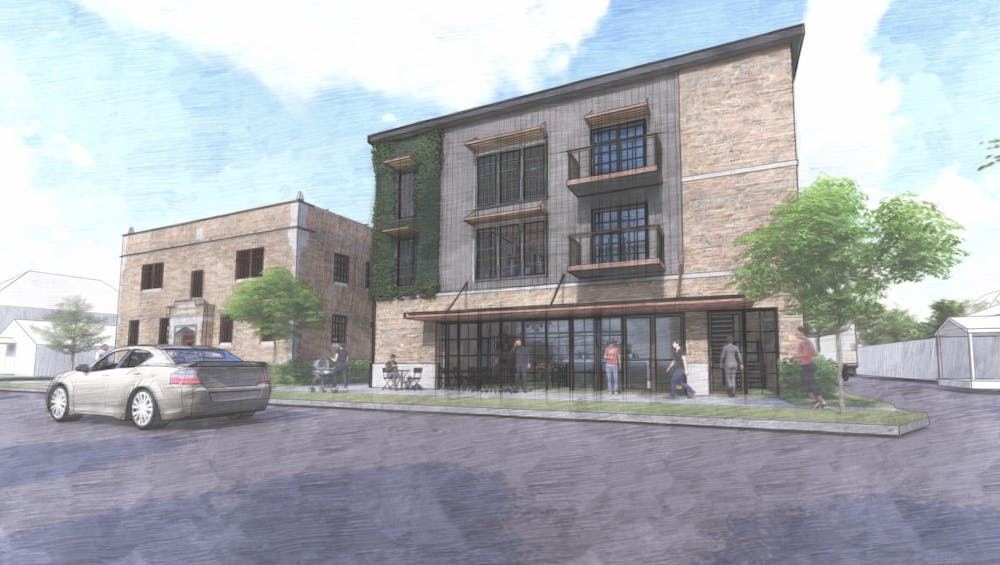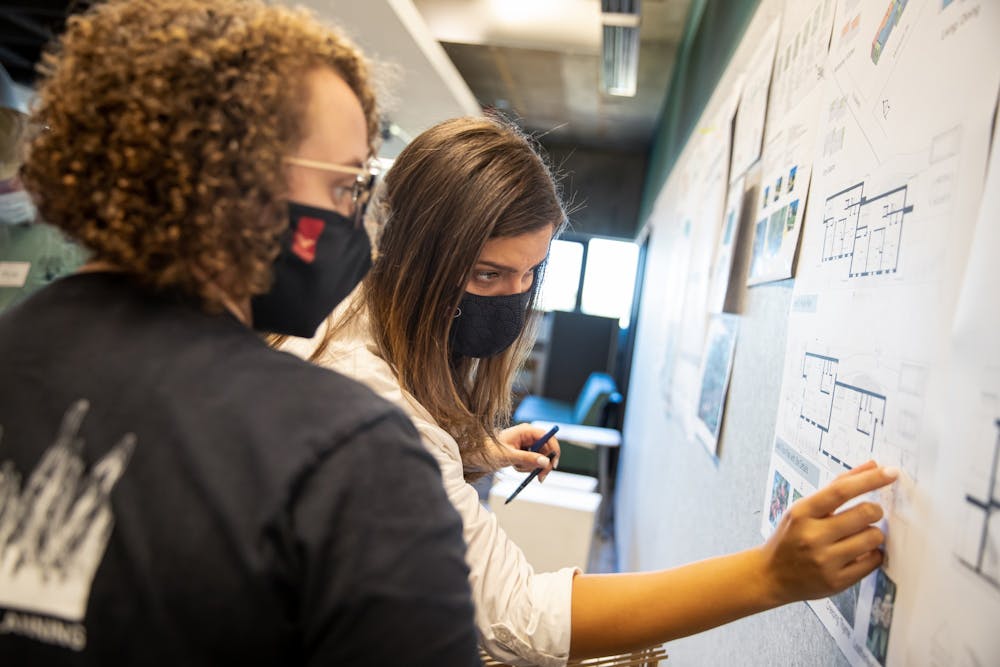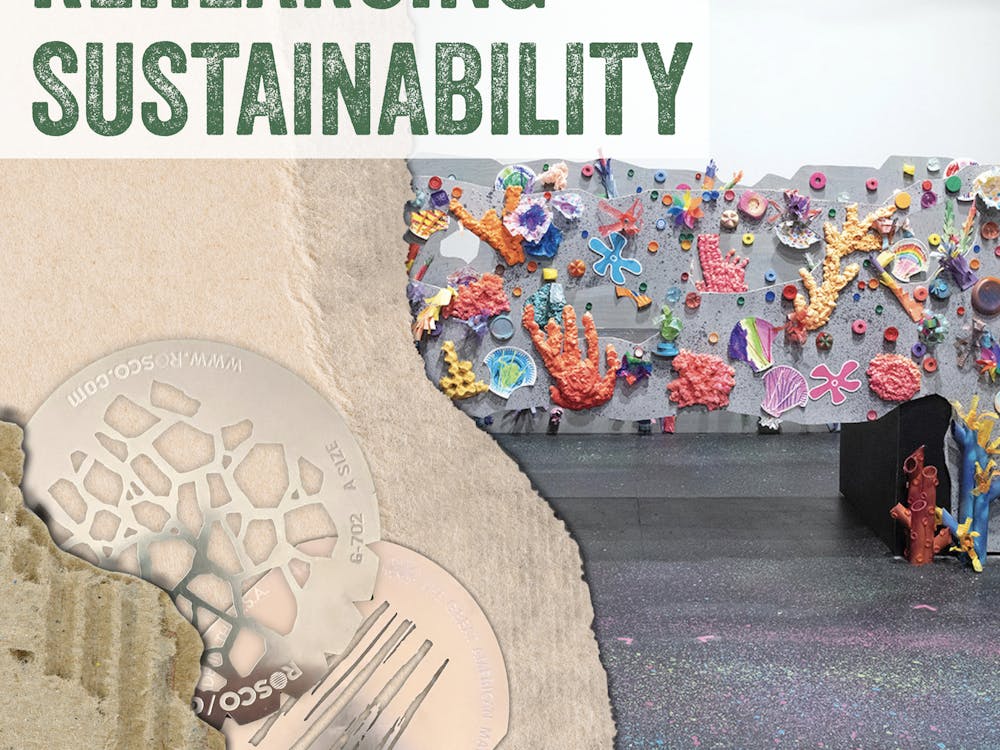Difference between net-zero energy and carbon neutral
Net-zero energy means the total amount of greenhouse gas or fossil fuel energy used by the building on an annual basis is equal to the amount of renewable energy created or stored by the building.
Carbon neutral means a building emits the same amount of carbon dioxide into the atmosphere as it offsets by absorbing carbon dioxide. Action that absorb carbon dioxide include planting trees, using bioplastic packaging and materials and recycling carbon-emitting substances that otherwise would have polluted the atmosphere. However, carbon-neutral buildings don’t necessarily need to actively remove carbon from the atmosphere.
Net-zero energy is more encompassing of removing greenhouse gases from the atmosphere through renewable energy, while some carbon neutral buildings are able to earn the label by just avoiding carbon dioxide emissions without actively removing carbon from the atmosphere.
Source: Office of Energy Efficiency & Renewable Energy and Computer Network
To continue providing students with hands-on opportunities to apply their studies, Ball State’s College of Architecture and Planning (CAP) has taken up the challenge of designing and building a net-zero energy house for the 2023 Solar Decathlon held by the U.S. Department of Energy.
“A net-zero energy house is a house that is low energy,” said Tom Collins, assistant professor of architecture. “It also is a house that can make at least as much energy as it uses each year on its site.”
The Solar Decathlon has two challenges universities can participate in: design, an annual competition, and build, a biennial competition. Collins said Ball State has participated in the department’s international competition for years in both the design and build challenges.
The Department of Energy began hosting these competitions in 2002 and Ball State completed its first build challenge in partnership with the University of Louisville in 2013.
Each competition asks students to design and build their houses, which are then placed on a flatbed trailer and driven to an exhibit for judging. Industry experts judge the student’s house based on their energy-saving solutions and the functions of the house.
“Teams that compete in the Solar Decathlon Build Challenge must design and construct fully functional houses,” according to the Department of Energy.
Since the 2020 Build Challenge, the Department of Energy has attempted to make the builds more sustainable by having them built at local sites, which is what Ball State’s CAP program is doing in Indianapolis for the 2023 Build Challenge.

A College of Architecture and Planning design from the 2019 Solar Decathlon Design Challenge. The U.S Department of Energy holds the Solar Decathlon Design Challenge annually and the Build Challenge biennially. Tom Collins, Rendering Provided
“[The competition] allows students at Ball State to meet and interact with people outside of the university in a couple of ways,” Collins said. “One way is that it encourages the students to work with a community partner and industry partners. A lot of that's a big focus at Ball State — where we have immersive learning classes, where we encourage lots of classes to engage with the community.”
Collins said another appealing opportunity the competition provides is the ability to connect with students at other universities. The 2023 Build Challenge had 32 teams apply for the competition from 10 countries, according to the Department of Energy.
CAP is going to build the net-zero energy house in a downtown neighborhood on the east side of Indianapolis. This house will be a part of the revitalization happening in these neighborhoods, alongside Englewood Community Development Corporation’s (Englewood CDC) partnership with East Washington Street. Englewood CDC is a “nonprofit entity that facilitates revitalization,” Collins said.
“The reason we chose Indy is just because there's a lot of development going on down there,” Collins said. “There's a lot of interest in sustainability and in doing projects like this, and we found some great partners in these neighborhoods that we work in down there that are interested in working with our students.”
Community partners, such as the Englewood CDC and Jefferson Electric, will help the students with the house. In the past, CAP has worked with Englewood CDC on design challenges, but the current build project happening in Indianapolis is the first time CAP has partnered with Englewood CDC on a build challenge. Jefferson Electric designs and installs solar panels on buildings and is helping students with the electrical functions of the home.
CAP is also working with the professional organization American Society of Heating, Refrigerating and Air-Conditioning Engineers (ASHRAE), which has been helping students decide on heating and cooling systems with mechanical engineers.
Englewood CDC is working on a plan to develop 20 duplex-style homes on vacant lots in the Englewood neighborhood. These new homes will provide 40 units of new housing in total. Englewood CDC has also been involved with establishing multiple new charter schools in the neighborhood to help with revitalization.
Englewood CDC’s project is catered to low-income families, and it will rent these homes as affordable housing with a monthly rent below $500, which is a prime focus of the nonprofit. It provides four different apartment options, along with rental homes and homeownership programs, according to its website.
One of the 20 duplex buildings will be CAP’s Solar Decathlon project. Collins said he is excited about CAP’s decathlon project being a part of a bigger picture than just the competition, as the Englewood CDC partnership gives students the opportunity to make a difference in the lives of potentially two families.
“I think this is a very challenging project for students not just because it's a net-zero energy house, but because it's a net-zero energy house for a family they don't know,” Collins said. “So, we have to try to anticipate what those needs would be for a family we don't know in a real neighborhood where the neighbors that currently live there are going to have to be OK with this new house that's coming in. And, they have to try to design a net-zero energy house that is affordable.”

A group of College of Architecture and Planning (CAP) students and faculty involved in the Solar Decathlon 2023 Build Challenge poses for a photo outside of the R. Wayne Estopinal CAP building in October 2021. The 2023 Build Challenge also acts as an immersive learning program for CAP students. Robbie Mehling/ Office of Immersive Learning, Photo Provided
Graduate architecture student Zoe Rader is excited about making a house for a client, even though the class doesn't know the specifics of the family. She believes this project will help prepare her for her future career in architecture.
“Because of all of the different lectures that we've been given, we have done deep-dive studies into different materials for the exterior of our building [and] for good insulation properties,” Rader said. “These are some of the parameters, that in the real world, you're going to have to follow these. So I think it's been a really great step into the real-life direction outside of school.”
Along with being part of an international competition, the net-zero energy house also serves as an immersive learning opportunity. CAP received a Provost Immersive Learning Grant in 2021.
CAP applied for the grant a year ago, and the competition started in the summer. Collins said faculty and advisers have been planning this project for about six months before the start of the competition in July 2021, and the house is expected to be finished in spring 2023.
Multiple classes are focusing on the net-zero energy house. In the fall 2021 semester, Community-Engaged Applied Learning Design Studio (ARCH 601), Comprehensive Architecture Studio (ARCH 400) and Landscape Architectural Engineering 4 (LA 414) were three classes focused on different design aspects of the house.
Rader was in ARCH 601 taught by Pamela Harwood, professor of architecture. The class was organized into groups to focus on making net-zero energy designs at the start of the semester, and these groups had a mix of graduate and undergraduate students.
In Rader’s class, time was split between a lecture focused on what the students were working on and workshop time. During workshop, groups communicated with each other and the other classes involved, coordinated presentations and created a narrative for their design.
Despite being architecture courses, Rader said students of many majors can participate in the project.
“I would encourage to possibly try and make this something that maybe business majors can even look at: how can they market this, [and] how can they give our house a brand?” Rader said.
Brady Mills, December 2021 financial planning graduate, was a student hired to focus on the business side of the net-zero energy house.
Mills had weekly meetings with professors in charge of the decathlon where he would take notes, organize paperwork and establish deadlines.
Outside of meetings, Mills helped with student relations and kept track of the landscape architecture, architecture and interior design programs’ progress. He also worked with the community partners and focused on fundraising for the project.
Collins encourages anybody interested in being a part of the project to get in touch, as there may be opportunities for students to “plug in and engage” with the program.
Contact Hannah Amos with comments at hannah.amos@bsu.edu or on Twitter @Hannah_Amos_394.





